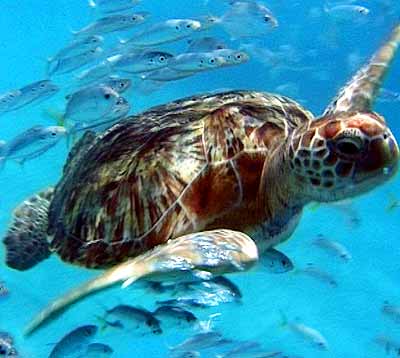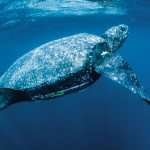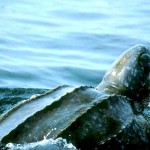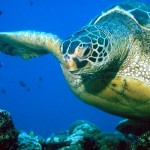Leatherback Turtle Facts
Scientific Classification of Leatherback Turtle: Dermochelys Coriacea
Kingdom of Leatherback Turtle: Animalia
Phylum of Leatherback Turtle: Chordata
Class of Leatherback Turtle: Sauropsida
Order of Leatherback Turtle: Testudines
Family of Leatherback Turtle: Dermochelydae
Genus of Leatherback Turtle: Dermochelys
Species of Leatherback Turtle: D Coriacea
Pictures of Leatherback Turtle
Check out some incredible pictures of these species below:
Some Interesting Facts about Leatherback Turtle
- These species are recognized as the largest among the sea turtles.
- Unique amongst other turtles, these species have leather type back.
- It has bones rather than just a protective covering.
- Jellyfishes form a part of their favorite diet.
- These species don’t have claws. They rather have flippers.
- These species migrate from one place to another.
Distribution of Leatherback Turtle
These species inhabit the regions of Alaska and Norway in the north to British Isles in the south. They can also be found in the Sub tropical and Tropical oceans. In addition to this, one can also spot them in regions of Puerto Rico, Mexico, Virgin Islands, and Nova Scotia etc. Infact, they also dwell in parts of Madagascar and Malaysia.
Characteristics of Leatherback Turtle
Size of Leatherback Turtle: The size of these species starting from the beak and exending up to the tail generally ranges between 4 – 6 feet. Although the largest one found is 10 feet.
Weight of Leatherback Turtle: The weight of an adult turtle lies within 660 – 1100 pounds.
Shell of Leatherback Turtle: The shell consists of bony plates devoid of scales. Moreover, the shell and plastron do not have demarcated boundaries, rather they are clubbed together. As compared to other turtles, their shells are not so hard.
Color of Leatherback Turtle: The lower portion of the shell is found in pink, white, black or grey colors. The shell is black or dark grey in color dotted with white spots.
Food Habits of Leatherback Turtle
These species like to feed on jellyfishes. Quick Fact: they can consume 50 giant jellyfishes in a day!! They also prefer to thrive on sea squirts, pyrosomas, sea urchins, seaweeds, algae etc.
Habitat of Leatherback Turtle
These species are pelagic. They do prefer to migrate from one place to another. They are quite active even at temperatures below 40 degree. One could also spot them in tropical areas and reefs. Their leathery shell helps them to maintain their body temperature. Thus, they can survive even when the oceanic temperature dips..
Evolution of Leatherback Turtle
These species actually evolved in the cretaceous period thatdates back 110 million years ago . These are the only living members of the family of Dermochelydae.
Breeding And Nesting of Leatherback Turtle
These species become sexually matured between the ages of 6 – 12 years. The leatherback turtle males have concave shells that help them at the time of mating. These species like to mate in shallow waters. The females usually come out during the nighttime and select a preferable location free of vegetation, rocks to carry out the intercourse. Moreover, she creates a pit with the help of her flippers. The females usually lay 70 eggs out of which about 40 turn infertile on an average. Once the mating gets finished, she returns to the ocean. The females reproduce 7 times after every 9 days. The temperature determines the gender of the offsprings.The cooler temperature indicates males while the warmer indicate females.
Life Cycle of Leatherback Turtle
The younger ones like to dwell in the tropical waters where the temperature more than 26 degrees. As soon as they are adult and their shell reaches 100 cm in length, they relocate themselves in areas where the temperature is less than 10 degree Celsius.
Life Span of Leatherback Turtle
Leatherback turtle expect to live for about 35 – 40 years.
Migration of Leatherback Turtle
Well these species travel far distances from their breeding and feeding regions. It is seen that they travel about 3700 miles approximately. Recent satellite data have revealed that these species found in Costa Rica also inhabit in parts of South Western pacific.
Threats of Leatherback Turtle
- Harvesting and Predation of Leatherback Turtle: People do ruthlessly kill these species in order to obtain their oil, meat and leathery skin. Moreover, dogs and pigs also consume turtle eggs.
- Leatherback Turtle Captured In Fishing Nets: These species accidentally become victims of fishing nets, gears, gillnets, dredges, trawls etc.
- Development in Coastal Areas: The rapid development of hotels and resorts in the coastal areas are leading to the depletion of these species.
- Pollution in Coastal Areas: These species mistakenly consume floating plastics for jelly fishes and it clings to their throat. This is one obvious reason for their death.
- Effect of Global warming: The sudden change in the environment is depleting their population on a large scale.
Conservation Status of Leatherback Turtle
The lives of these species are threatened.
Conservation Measures of Leatherback Turtle
As mentioned earlier, these species are migratory; therefore there should not be any law of consumption adhering to a single nation. However, the preservation of these species should be carefully monitored and done in a specific way going by the international treaties and laws.




